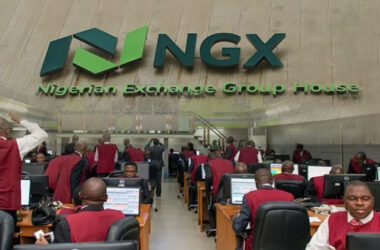In the world of investments, there are different definitions of this element depending on the instrument you are dealing with and your personal propensity to deal with it. To use a general definition, it can be said that, when investing, risk is the possibility that the return is worse than expected, leading to the loss, in part or in whole, of the value of the investment.
Making a list of assets considered risky is just as difficult as defining risk itself. However, there are some instruments that are increasingly entering investors’ portfolios that carry risks that perhaps not everyone is aware of, cryptocurrencies and so-called meme stocks are some of the most popular risky assets of the moments.
Infact, bonds issued by sovereign states are denominated either in local currency or that of a developed market (hard currency, usually US dollar).
This creates two distinct subsectors within emerging market bonds and exchange rate risk is the dividing line that investors should keep in mind between the two. “Currency fluctuations, for example, are the main performance driver for the local currency market,” says Neal Kosciulek, manager research analyst for Morningstar Research Services.
Bonds issued by emerging market governments carry additional credit risk compared to developed market sovereign bonds because there is greater uncertainty about their ability to meet their obligations. “Uncertainty is determined by several factors, including the ability of the country to make citizens pay taxes and to be able to manage their finances responsibly,” says Kosciulek.
Another problem is figuring out which benchmark to follow. “As with emerging market equity indices, benchmark providers’ definitions of emerging bond issuers vary,” says the analyst. “Determining whether South Korea is an emerging or developed country, for example, may have implications on the composition of the portfolio.”
Country Tracker Funds
“Interest in country funds (also known as country tracker funds) always worries us,” says William Samuel Rocco, senior manager research analyst for Morningstar. “They are often used to follow countries that, at a given moment, are considered hot. And this is always a dangerous attitude. We have found that investors don’t always perceive how risky they can be or how to use them properly”.
Worth noting is that focusing on a specific country does not always guarantee real exposure to that area. This can be seen by looking at the revenue exposure (where companies make their profits) of the securities that are part of a given basket. An investor who buys a UK small cap equity fund, for example, is actually investing in companies whose fortunes depend in part (almost 20%, on average) on the business they produce in the United States.
Country bias is another thing to watch out for when choosing such funds – this is where investors tend to skew their portfolio to their home stock market or those which are more familiar to them. “Before the arrival of the Internet, investors had little information about companies that were outside their home borders. So it was natural, especially for the more cautious, to buy stocks they had a lot of information about”, says Iam Tam, director of investment research for Morningstar. “This led to an overexposure to the equities of one’s country. Investors today have a lot more information, but the behavior is the same. Equities’ investors often look for information on their local market, in order to stay in their comfort zone. It is an understandable attitude but, from the point of view of diversification and performance, it’s penalising “.
Small Caps
Small caps stocks can tend to offer higher long-term returns because they are coming from a lower base, but investors need to be prepared to withstand phases of considerable volatility.
These companies are less-known to the market, which means there is a greater opportunity for some active managers to make good choices within the sector and outperform an index. But, along with better growth prospects, there is also a chance of seeing setbacks.
In general, small caps can offer a better alignment of interests between investors and the board of directors of a company (which often coincides with the family that founded the company) which, even when things go wrong, does not abandon ship. “Small cap stocks are generally more volatile than their larger counterparts and should have their place in a well-diversified portfolio,” says Alex Bryan, analyst for Morningstar.
How Much Risk Should You be Taking?
So how much risk should an investor take when investing? Investors can determine their risk levels using three steps.
Establish your goals
Determine, quantify, and prioritise your investment goals. This is necessary because different goals like an emergency fund, retirement, or a down payment on a house or a car have different time frames that require different risk levels.
Assess your risk capacity
Risk capacity helps you understand the optimal amount of risk you could take in order to maximise the chance that you reach your goal, depending on how far you are from that goal. If you’re further away, you can handle the risk that your portfolio loses money for short periods. These bumps smooth out over time, and investors tend to earn a higher return for bearing more risk.
Consider risk tolerance
Your risk capacity should largely dictate your risk level, but risk tolerance is about how market swings make you feel. Short-term losses won’t ruin long-term returns, but how uncomfortable does a 40% portfolio decline make you feel? It’s hard to know until the situation arises, but if you think it would make you uncomfortable, you might have a lower risk tolerance. Bumps in performance tend to smooth out over time, and investors tend to earn a higher return for bearing more risk, but it’s important that you’re able to sleep at night along the way.








